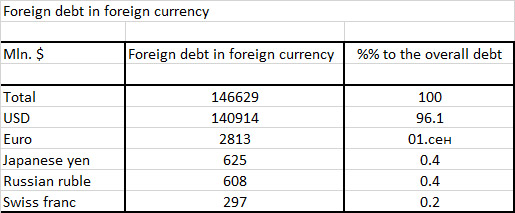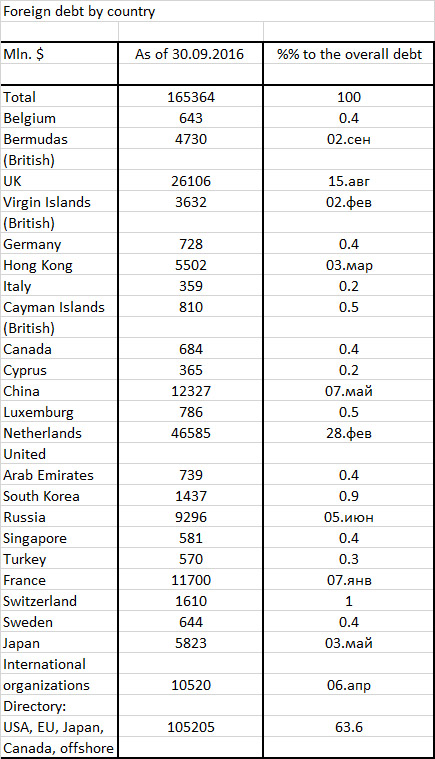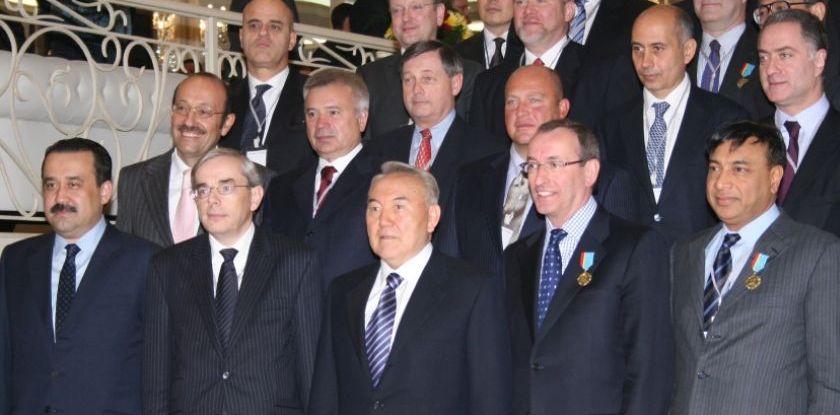We continue to comment on the report of the National bank of Kazakhstan “Payment balance and foreign debt of Kazakh republic for 9 months of 2016”, published Feb. 28 2017 on the website of Kazkahstani regulator.
Based on official data of the National bank we created three tables, characterizing foreign debt of the republic from the point of view of borrowed currency and lending countries.
The first table is called “Foreign debt in national and foreign currency”. Unfortunately, the regulator for unknown reasons limited the period from Dec. 31 2012 up until Sep. 30 2016, even though in other parts of the report, statistics is given starting from 2005.

From the numbers, we can see that Kazakhstani foreign debt was mostly taken in foreign currency. Thus, currency risks for the economy and financial system are in the maximum range.
Second table is called “Foreign debt in foreign currency”. From it, we see that foreign debt of Kazakhstan on which regulator has information on the currency being borrowed, is mostly consisted of US dollars. Thus, it looks like dollarization of the economy, National bank says its fighting, is being generated here.
This also means that USA, Euro-zone governments, and to a lesser extent Japan and Russia, partially put off their current problems to Kazakhstan. Because central banks and governments of these countries can influence the rates of their currencies and are very active in doing so in recent years, thus unintentionally affecting the parameter of Kazakhstan’s foreign debt.

Third table is called “Foreign debt by country”. We chose the largest countries-lenders to Kazakhstan. It is easy to notice that these same countries are also main trade partners of the Kazakh country – importers of Kazakh raw materials etc.

Due to this data, Akorda’s efforts to attract foreign investors to the country, so that they could reform national economy and move it to non-raw material basis, seem doubtful. Because, in essence all of Kazakhstan plays a role of a raw material source for more developed countries and doesn’t have an opportunity to influence investors.




